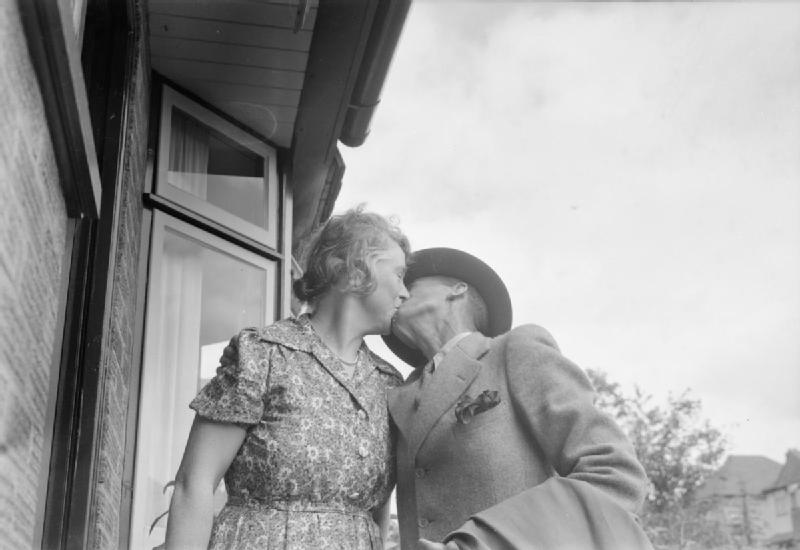Demobilisation Centres In The United Kingdom on:
[Wikipedia]
[Google]
[Amazon]
 At the end of the Second World War, there were approximately five million servicemembers in the
At the end of the Second World War, there were approximately five million servicemembers in the
 At the end of the Second World War, there were approximately five million servicemembers in the
At the end of the Second World War, there were approximately five million servicemembers in the British Armed Forces
The British Armed Forces, also known as His Majesty's Armed Forces, are the military forces responsible for the defence of the United Kingdom, its Overseas Territories and the Crown Dependencies. They also promote the UK's wider interests, s ...
. The demobilisation and reassimilation of this vast force back into civilian life was one of the first and greatest challenges facing the postwar British government.
Demobilisation plan
The wartime Minister of Labour and National Service and Britain's first post-warForeign Secretary
The secretary of state for foreign, Commonwealth and development affairs, known as the foreign secretary, is a minister of the Crown of the Government of the United Kingdom and head of the Foreign, Commonwealth and Development Office. Seen as ...
Ernest Bevin, was the chief architect of the demobilisation plan. The speed of its introduction was attributed to the tide of public opinion, which favoured slogans and policies that appealed to peace and disengagement. According to some sources, it was also driven by the labour shortage due to post-war reconstruction. The plan received bipartisan support, which was not seen during the 1930s when Labour and Conservative positions lacked consensus.
The details involving the criteria and framework for demobilisation was unveiled to the public on 22 September 1944. It was scheduled to be implemented on 18 June 1945 and, a month before that date, British soldiers were already well informed about the process, including the welfare system that would support the veterans. Under the plan, most servicemen and servicewomen were to be released from the armed forces according to their 'age-and-service number', which, as its name suggests, was calculated from their age and the months they had served in uniform. A small number of so-called 'key men' whose occupational skills were vital to postwar reconstruction were to be released ahead of their turn. Married women and men aged fifty or more were also given immediate priority.
Demobilisating service personnel passed through special demobilisation centres.
Release process
The release process began on schedule, about six weeks after V-E Day. Decommissioned soldiers received a demobilisation grant and a set of civilian clothing, which included the so-called " demob suit", shirts, underclothes, raincoats, hat, and shoes. At the end of 1945, demobilised soldiers reached 750,000 and this number doubled two months later after Japan's surrender. By 1947, about 4.3 million men and women returned to ' civvy street'. The process was not without controversy. Frustration at the allegedly slow pace of release led to a number of disciplinary incidents in all branches of the armed services in the winter of 1945-6, most famously the so-called RAF 'strikes' in India and South East Asia. This frustration led to the abandonment of some of the pre-release programmes.Personal challenges
Aside from the institutional problems of release, returning service-men and -women faced all kinds of personal challenges on their return to civilian life. Britain had undergone six years of bombardment and blockade, and there was a shortage of many of the basic essentials of living, including food, clothing, and housing. Husbands and wives also had to adjust to living together again after many years apart. One indicator of the social problems this caused was the postwar divorce rate; over 60,000 applications were processed in 1947 alone, a figure that would not be reached again until the 1960s.Allport (2009), p. 87Demobilisation centres
At the end of World War II, British servicemen and women returned to civilian life by passing through a demobilisation centre. Personnel returning to this country from abroad for the purpose of release passed first through a disembarkation unit. They then went on to a dispersal unit.Military Disembarkation Camp Units
Military Dispersal Units
See also
* Civil Resettlement Units *Demobilization
Demobilization or demobilisation (see spelling differences) is the process of standing down a nation's armed forces from combat-ready status. This may be as a result of victory in war, or because a crisis has been peacefully resolved and militar ...
* Demobilisation of the Australian military after World War II
* Demobilization of United States armed forces after World War II
* Demob suit
* Military discharge
* Military history of the United Kingdom during World War II
* National Service (Armed Forces) Act 1939
* Royal Air Force Mutiny of 1946
The Royal Air Force strikes of 1946 was a series of demonstrations and strikes at several dozen Royal Air Force stations in the Indian subcontinent beginning on 22 January 1946. As these incidents involved refusals to obey orders they technically ...
* Post–World War II demobilization strikes
Post–World War II demobilization strikes occurred within Allied military forces stationed across the Middle East, India and South-East Asia in the months and years following World War II. American military personnel based in occupied Germany wer ...
References and sources
;References ;Sources * Alan Allport, ''Demobbed: Coming Home After the Second World War'', Yale University Press, 2009, * Hansard - HL Deb 17 October 1945 vol 137 cc353-5Further reading
* Barry Turner & Tony Rennell, ''When Daddy Came Home: How Family Life Changed Forever in 1945'', Pimlico, 1995, * Roger Broad, "The Radical General: Sir Ronald Adam and Britain's New Model Army 1941-46", The History Press, 201,External links
{{DEFAULTSORT:Demobilisation Of The British Armed Forces After World War Ii 1945 in the United Kingdom 1940s in military history Military history of the United Kingdom during World War II British Armed Forces Aftermath of World War II in the United Kingdom